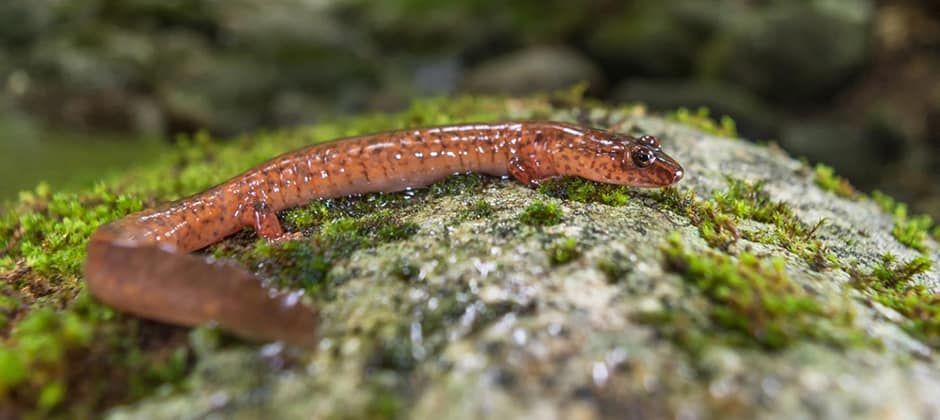Share this article
In tiny streams, salamanders dwindle due to climate change
As Winsor Lowe studied tiny headwater streams in the mountains of northern New Hampshire, he found he had a mystery on his hands. Adult salamanders, which he had been studying in the area since 1999, were declining. Their larvae, on the other hand, were holding steady. Something was happening to these amphibians, he suspected, between their larval stage and their adult stage, during the delicate stage of metamorphosis.
The problem, Lowe and his colleagues concluded, was that climate change was causing greater fluctuations between low and high flows in the streams, and that variability was killing spring salamanders during metamorphosis.
“Just spending all that time out in New Hampshire over the years and growing up there, I had noticed there were differences in patterns of stream flow,” said Lowe, a biology professor at the University of Montana and lead author of a recent study on the salamanders in the Proceedings of the National Academy of Sciences. “But it was having gone to the same stream for 20 years and looking at the trend in the population that led me to ask, ‘Well, why are we seeing this decline in in the abundance of adults over time and no change in the larvae?”
Lowe and his team were looking at the salamander Gyrinophilus porphyriticus, a headwater species with aquatic larvae and semiaquatic adults.
Over the last 20 years, they found that although there was no trend in larval abundances, the adults had declined about 50%.
“It’s a significant trend over the 20 years,” Lowe said.
Meanwhile, stream flows have been getting more variable throughout the Northeast. Looking across five streams in northern and central New Hampshire, they found fewer salamanders survived metamorphosis during years when streamflow variability was high during the summer, leading to a decline in the adult population.
“There are a lot of reasons we might expect metamorphosis to be a challenging period,” he said. “They’re changing their body plans from very aquatic to one that is more terrestrial.”
For Lowe, the study underscores the need for society to focus not just on average conditions under climate change, but on more frequent highs and lows that affect a range of species, including salamanders in small creeks and streams.
“They are a great representative of these small headwater streams that are so easy to overlook and yet so critical,” Lowe said. “They’re hotspots of freshwater diversity, but they’re also guardians of downstream water quality that I think we need to pay attention to and protect.”
Header Image: Researchers found spring salamanders are less likely to survive metamorphosis to adults in streams with highly variable flows. ©Ryan Wagner








